There’s an Elephant in my Trunk
10 October 2017 | Giving Back | Tyler Davis
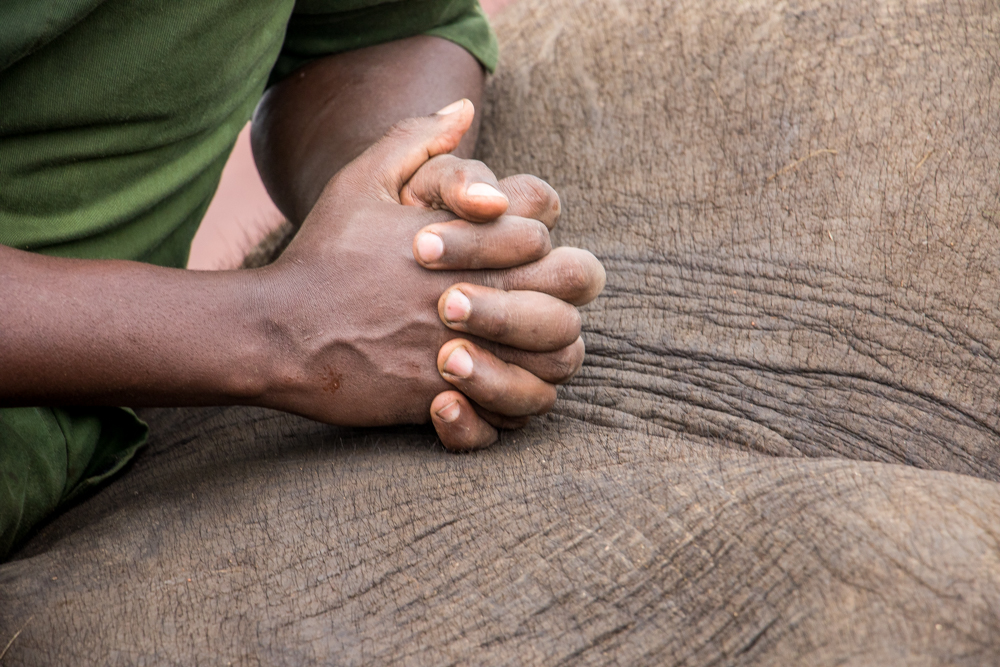
You would be mightily surprised to learn what goes on behind the scenes at a lodge like Angama Mara. So much so, in fact, that we have two utility vehicles running around non-stop from before the sun rises until well after it sets. At any given time, you may find one of our utility vehicles ferrying guests’ luggage to and from the airfield. Or setting up guest delights such as Forest BBQ or a private picnic on the Out of Africa kopje. Or running an errand to a neighbouring camp or nearby village. Or transporting an elephant.
Wait . . . did I say transporting an elephant? All in a day’s work for our utility team.
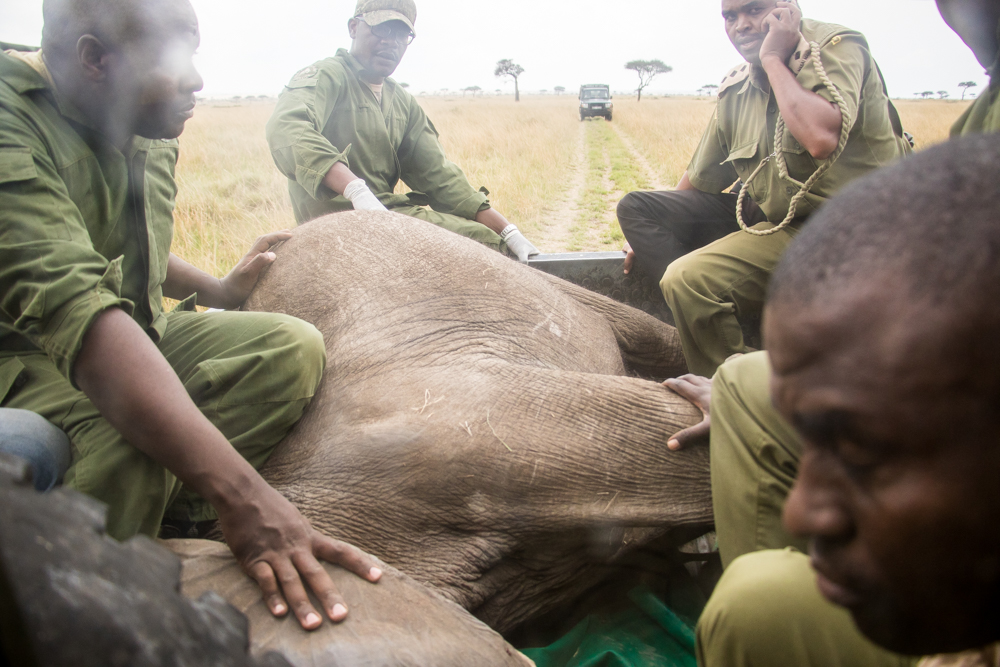
Towards the end of July, our guide Johnny noticed a young elephant all by himself. Somewhere between 2.5 and 3 years old, this juvenile male was far too young be travelling solo, and Johnny knew it so he alerted the Mara Conservancy rangers.
The Mara Conservancy kept tabs on the youngster in the following weeks, hoping he’d reunite with his mother and herd, or possibly even be adopted by another if his biological mother had died or abandoned him. Sadly, no such luck.
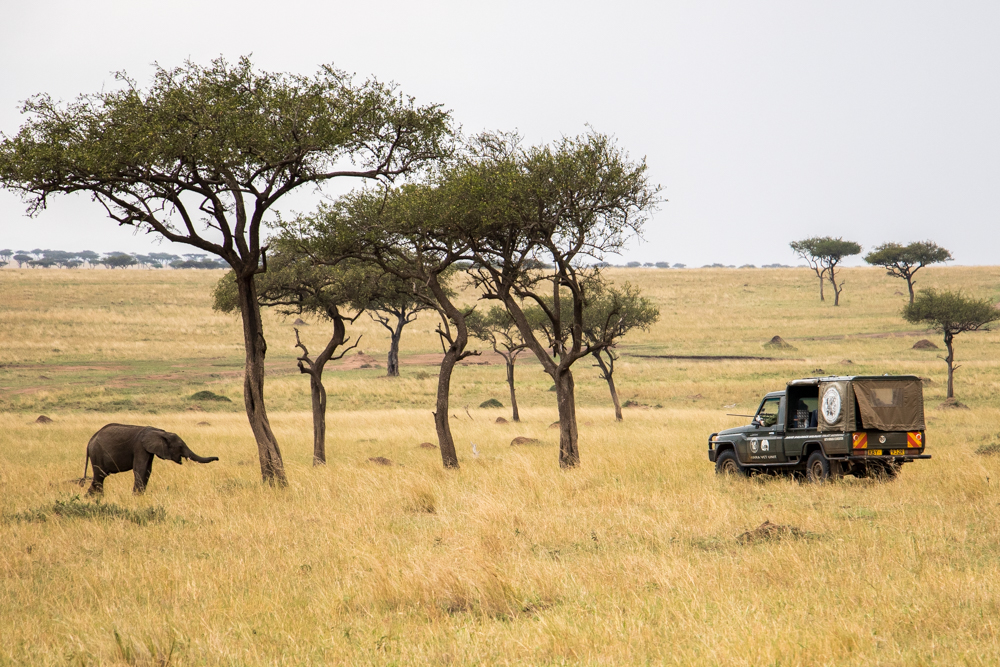
To say that he was doomed is a bit of an overstatement – at 2.5 years old, an elephant is capable of feeding itself and surviving to adulthood. However, such an elephant is not only incredibly vulnerable to predation (and this little guy was smack in the middle of the Sausage Tree Pride’s territory), but a young male without a social system and role models can grow up to be a problem animal.

Thus, the carefully considered joint decision was made between the David Sheldrick Wildlife Trust, Kenya Wildlife Service, and Mara Conservancy to relocate the elephant to the David Sheldrick Elephant Orphanage, where it would be guaranteed safety, food, and family. But just how do you relocate a 1-ton animal from the Mara Triangle to Nairobi?

First, it takes an experienced team of veterinarians and rangers to safely sedate and capture such a large animal. Next, a whole lot of hands are required to pick up so much dead weight, and lift it into a vehicle with a big enough bed (that’s where our utility vehicle came in). Then said vehicle needs to race quickly, but very carefully, to the nearest airfield with a semi-conscious pachyderm and the team of professionals looking after it in the back (bonus points when you must drive through a torrential downpour).
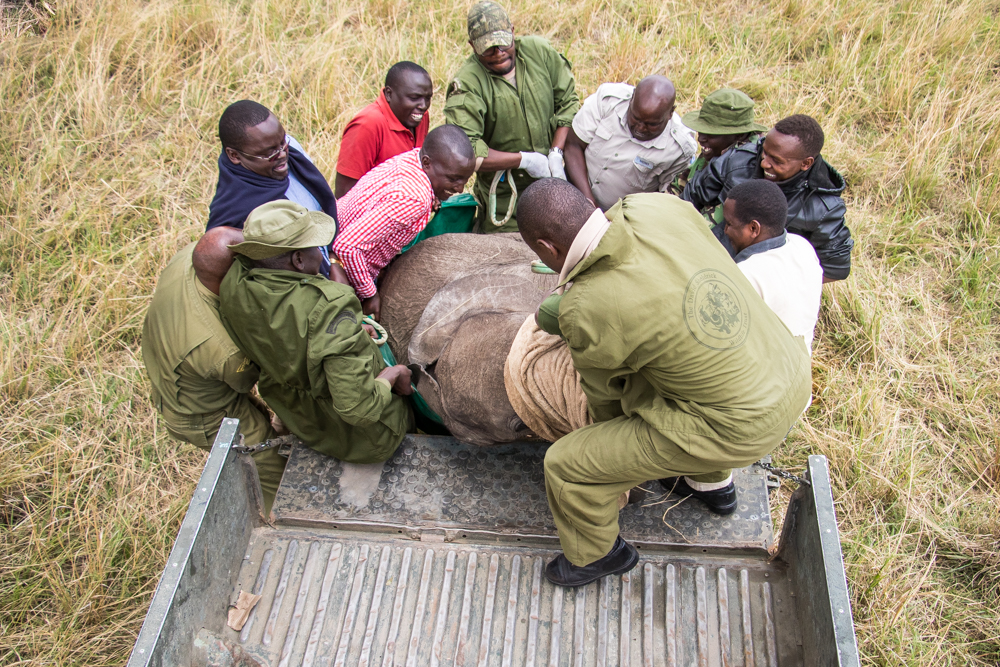
Penultimately, the next step is to solve the puzzle of how to move an animal the size of a Smart Car from the bed of a truck into the back of a Cessna Caravan, when the biggest door is roughly an elephant’s hair wider than the elephant itself (hint: it may take a few tries). Pro-tip: secure the sleepy elephant with thick webbing and come-alongs, so that during the flight he doesn’t gradually scooch to the rear of the aircraft, upsetting the fore-aft balance and causing a tail-dragging crash upon landing.

FINALLY, upon reaching Nairobi, the very last step is to simply reverse all the previous steps until the elephant is safely and soundly in his new home at the Orphanage, where we look forward to visiting him once he has settled in with his new family.
As for Angama’s utility vehicle, none the worse for wear and just another day and another feather in the cap, er – bonnet.
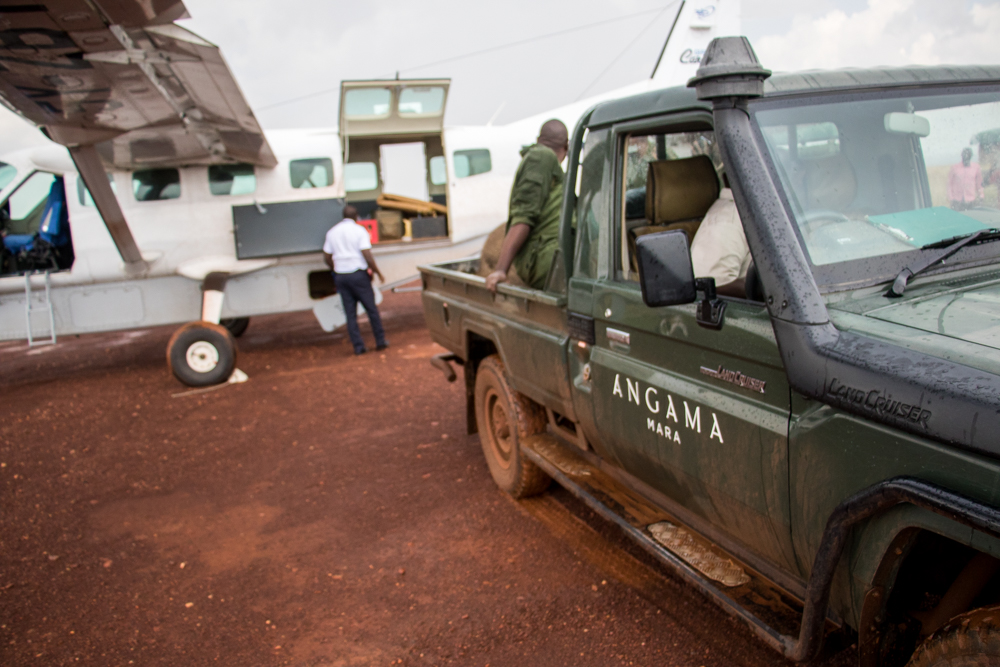
Note from the Editor: A special thanks to the David Sheldrick Wildlife Trust, Kenya Wildlife Service, and Mara Conservancy for all the work they do to save and protect Kenya’s at-risk wildlife. Specifically, thank you veterinarian Dr. George Paul, vet assistant Felix Micheni, Research Scientist Steven Ndambuki, and Rangers Leonard Sentero and Alex Nganga from the DSWT/KWS Mobile Vet Team, as well as everyone from the Mara Conservancy, for their united efforts in rescuing this elephant. If you would like to sponsor and even meet this elephant, now known as Sapalan, on your next trip to Nairobi, please visit the David Sheldrick Wildlife Trust website for more information.
TAGGED WITH: Wildlife, Maasai Mara, David Sheldrick Wildlife Trust, David Sheldrick Elephant Orphanage



COMMENTS (2)
Jessica Smith
October 10, 2017Oh this story makes me so happy! My boyfriend (Colin Thoreen – he says Hi, Tyler!) and I are coming to Angama Mara in February, and we were planning to visit the David Sheldrick Wildlife Trust either before or after our visit. I was even looking for a baby elephant to adopt before we came so that we could meet our foster elephant on our visit, and now we can actually adopt one that has a connection with Angama Mara! Sapalan’s story is not up on their website for adoption yet (apparently neither is the story of the baby girl they got just before him, so I’m guessing it will be a few weeks?) but we will adopt him as soon as they will let us! In the meantime, I will continue to stalk your blog in anticipation of our February visit 🙂 Can’t wait! ~Jess
REPLYNicky Fitzgerald
October 11, 2017Hi Jess
REPLYThank you for this lovely post and we cant wait to welcome you to the Mara